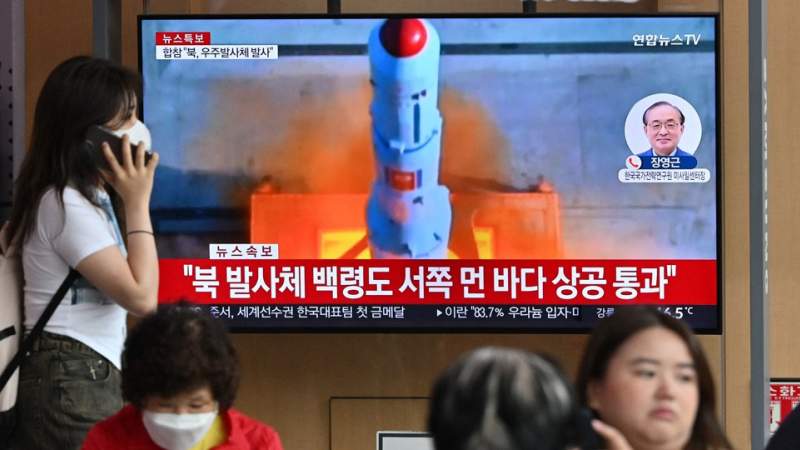North Korea’s Reconnaissance Satellite Crashes into Sea after Rocket Failure

News - Middle East: North Korea’s first military reconnaissance satellite launch has ended in failure after the rocket's newly developed second-stage thruster malfunctioned, state media said.
Korean Central News Agency (KCNA) reported on Wednesday that the launch of the new-type satellite carrier rocket "Chollima-1" failed because of instability in the engine and fuel system, sending the booster and payload plunging into the sea.
According to KCNA, the National Aerospace Development Administration launched "Malligyong-1" loaded on the "Chollima-1" as scheduled at the Sohae Satellite Launching Ground in Cholsan County of North Pyongan Province at 06:27 local time on Wednesday.
The carrier rocket crashed into the West Sea of Korea along with the loss of thrust because of an abnormal start of the second-stage motor after the first-stage separation while making a normal flight, the report said, adding that “the reliability and stability of the new engine system” was “low” and the fuel used “unstable,” leading to the mission’s failure.
A spokesman for the National Aerospace Development Administration said the cause of the failure is being investigated by the scientists, technicians, and specialists at the institute.
North Korean officials have underscored that a second launch would be held "in the nearest future" once authorities are able to correct the technical issues, after conducting new interstager tests.
Reuters cited George William Herbert, an adjunct professor at the Middlebury Institute’s Center for Nonproliferation Studies, as saying that the images showed at least part of a rocket, including an “interstage” section designed to connect to another stage.
Herbert said North Korea's new rocket was probably a liquid-fuel rocket and the round, brown object inside is likely a propellant tank for either fuel or oxidizer.
North Korea’s rocket launch triggered a series of emergency alert systems and sirens in Japan and South Korea as residents of both nations were urged to seek shelter. Shortly after the initial reports were aired, the South Korean Interior Ministry admitted to having issued “erroneous” warnings in Seoul.
The United States, Japan and South Korea condemned North Korea’s failed missile launch.
Meanwhile, a United Nations spokesperson for the UN chief said North Korea was not allowed to launch missiles.
"The Secretary-General strongly condemns the military satellite launch conducted by the Democratic People’s Republic of Korea," Stephane Dujarric, spokesman for the Secretary-General, said in a statement, adding that any launch by Pyongyang using ballistic missile technology is "contrary" to the relevant Security Council resolutions.
Before launching the satellite, North Korea announced that it would be launching a reconnaissance satellite in response to ongoing military drills being carried out near the Korean Peninsula.
-
09:33
Gaza Health Ministry: 4 massacres by the Israeli enemy in the past 24 hours claimed 31 lives and left 56 wounded
09:33
Death toll from US-Israeli genocide in Gaza rises to 35,303; more than 79,261 injured
08:09
Armed Forces: Downed drone is the 4th in support of Gaza during the Promised Victory Battle
08:08
Armed Forces: The US MQ-9 drone was targeted with a locally manufactured surface-to-air missile, footage will be broadcast later
08:05
Yemen's Armed Forces down US MQ-9 drone in Marib





